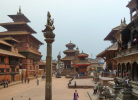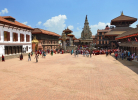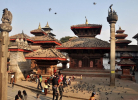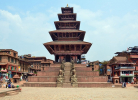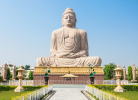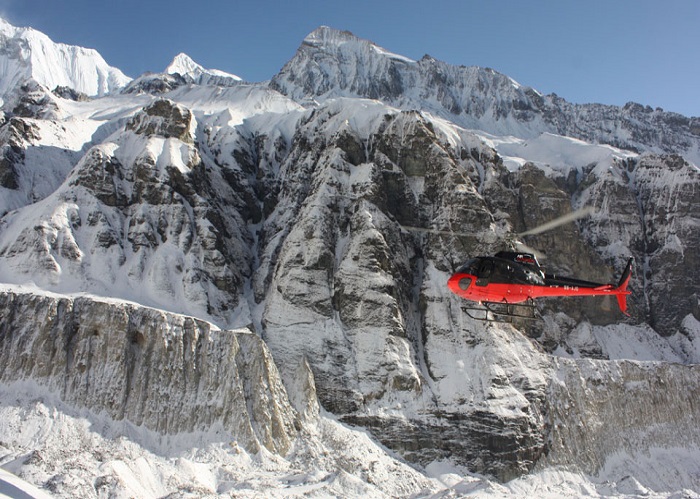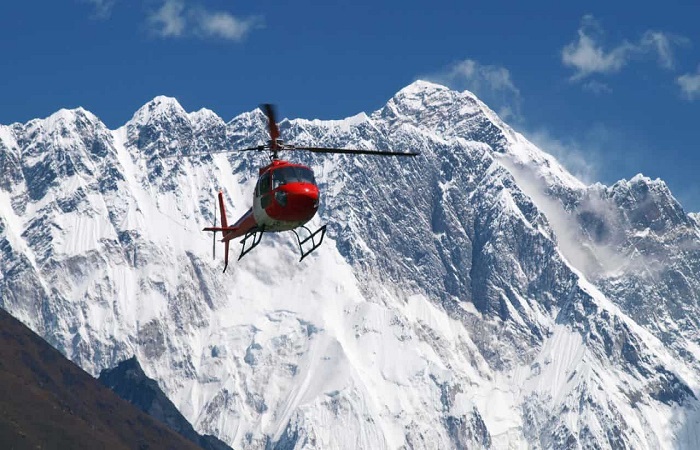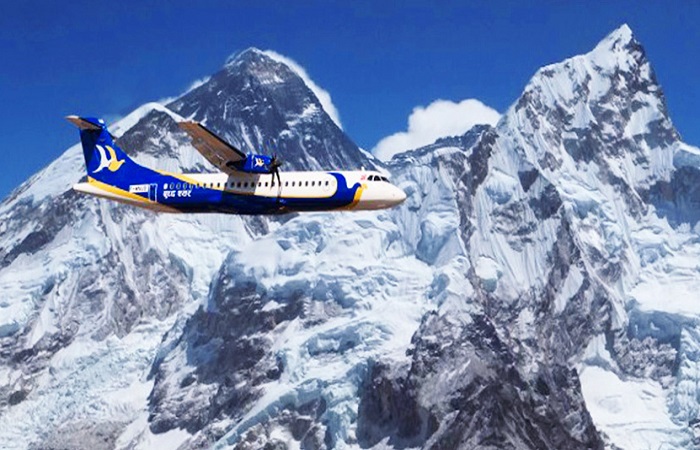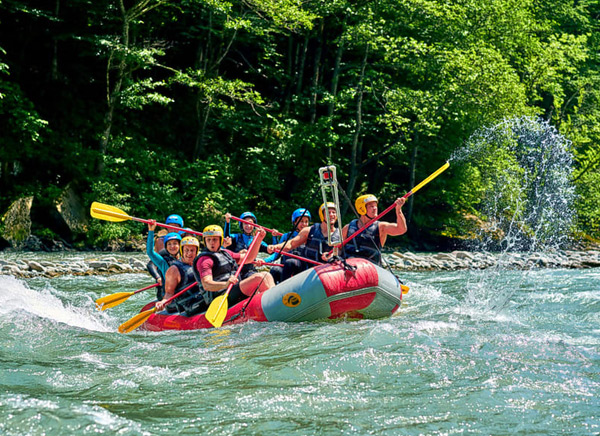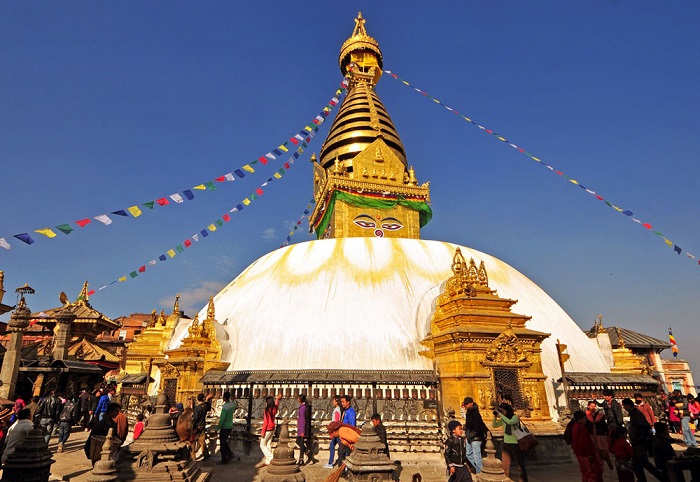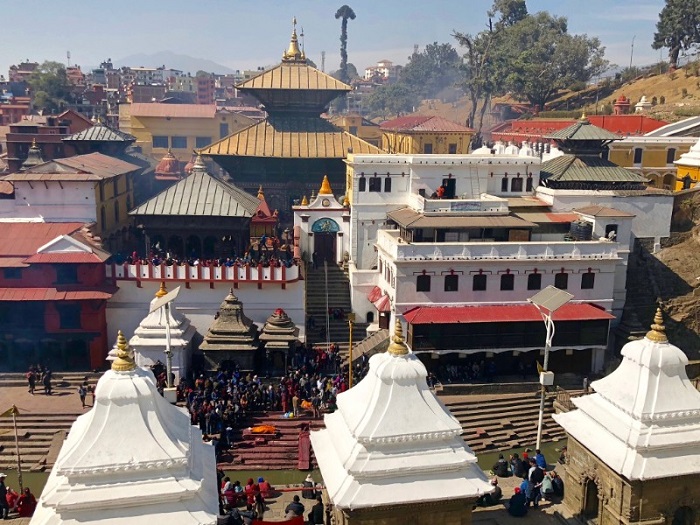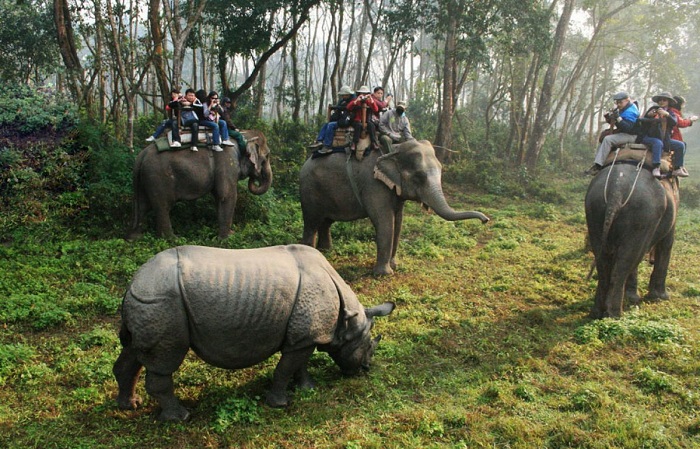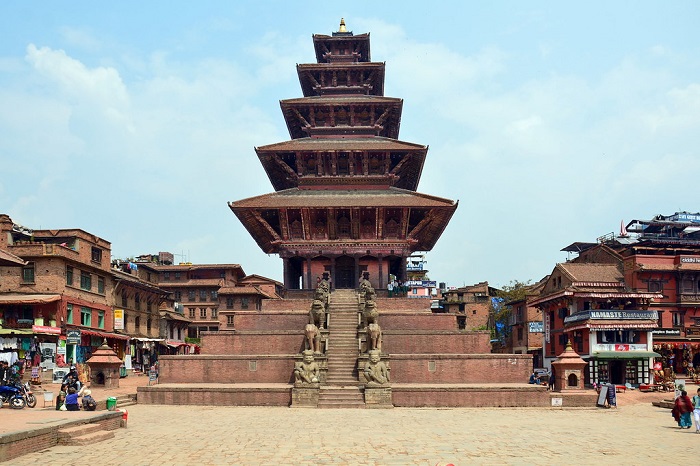Swayambhunath Temple
Located on a small hillock named Swayambhunath, this temple is a famous one located to the northwest of the Kathmandu Valley. Famously known as the monkey temple, this tourist destination receives pilgrims and tourists from every nook and corner of the world. According to mythology, the glory of this destination started from this structure.
History of Swayambhunath Temple
This religious site is located 3 km to the west of Kathmandu. It is one of the holiest Buddhist religious sites of the country. The hillock is assumed to be created from a primordial lake, which was present in the region, around 2000 years ago. The existence of this temple has been indicated in an inscription, which was made in 460 AD. Thus, it is assumed that the temple has been in the location since 460 AD or before that. Renovation works were made during 7th century. It is said that there used to be a temple built by Emperor Ashoka in 3rd century BC, but was destroyed. There is no concrete evidence for the same. It is said that King Manadeva built this temple. By 13th century, this temple became an important Buddhist pilgrimage site.
Later, in 2010, the structure was completely renovated, around 1500 years after its construction. The dome of the stupa was re-gilded using gold (20 kg). However, a few regions of the temple were destroyed by lightening in 2011 and earthquake in 2015.
Mythology of Swayambhunath Tmple
According to legends, Swayambhu means ‘self-occurring’. The ancient river suddenly had a lotus flower at bloom in the middle of it. Slowly, the flower spread throughout the river and across the valley. A large illusion of Sakyamuni Buddha was seen on top of the lotus. This illusion was seen by Manjushri, who came in search of the place. The hill was raised from the river by Manjushri, a Bodhisattva of learning and wisdom. According to the etiquettes of bodhisattva, he should keep his hair short and clean. However, he let his hair grow down and got infected with lice. It is said that these lice jumped out and became monkeys. Thus, the hill is full of monkey.
Architecture of Swayambhunath Tmple
The base of this stupa is cube shaped. On all four sides, there is a pentagon shaped Toran. On each side of the stupa, a pair of eyes is present. This indicates that the God is omnipresent. Above each pair of eyes, there is another eye, which is the eye of wisdom. There is Panch Buddha (five Buddhas) on each side of the stupa. Walk a past the stairs leading to the temple and you will find two lion statues guarding the entrance. This staircase is the most recommended route that pilgrims take to enter the stupa, on foot. However, if you are ready to drive to the west side of the stupa, you can find another entrance; with lesser steps.
At the bottom of the staircase on the eastern side, there is a large gate with 12 feet tall Tibetan prayer wheel. It would take two strong people to move the wheel. For every revolution, a bell sound is heard. Near the gate, there are numerous small wheels for tourists to spin and perform prayers. Right before the stairs, you will find three 17th century Buddha statues. These statues are worshipped by women. Along the stairs, you will find many inscribed Tibetan stones. You can also spot small shops where merchants sell such stone replicas to tourists. The stairs will take you through forest region inhabited with numerous monkeys.
The main stupa building is a white domed structure. The stupa is filled with numerous statues and artifacts. From the tower, you can find a 13 level golden spire. The umbrella on top of the spire holds a bowl full of precious stones.There are numerous other shrines around this main building. Each one was donated by kings and other political figures.
Tourist Attractions in Swayambhunath Temple
Before sunrise, you can find thousands of pilgrims walking up the 365 steps to the top of the hill. Apart from the main white domed stupa, there are numerous other structures around it.
1. Harati Devi Temple
This is a notable temple of the structure. This temple is dedicated to Hindu Goddess, Harati, the eradicator of smallpox. This shrine is a brick pagoda. Women and children visit this structure for seeking blessings. This temple holds 19th century statue as deity. Stew, bread and rice are served to the God.
2. Shantipur
This is a box shaped temple, which is said to contain a living man, who has been there for 1500 years. It is said that Shanti Sri has locked himself inside a vault under the temple since 5th century. He vowed that he would remain inside the vault, until he is needed by the valley of Kathmandu. He is believed to be in a mystic living state. In 17th century, when the valley of Kathmandu was in distress due to drought, the king of the region, PartapMella visited this chamber. He mentioned that he had to go through several underground rooms filled with frightening elements like snakes, hawks, ghosts and others. In the last room, the king found the saint alive and meditating. The saint gave a relic, which the king brought back to the kingdom, resulting in immediate rain.
3. Pratapur and Anantapur
These are two temples in the shape of a bullet. These are found on the either side of the stupa. These temples were built by King Pratap Mella, as a donation for his victory of Tibet in 17th century. There is a twin bells in front of the temple, which has inscriptions about his victory.
4. Shree Karma Raj Mahavihar
This is an active monastery located in the northeast corner of the temple complex. The monks of this monastery perform rituals every evening at 3 pm or 4 pm.
5. Vajra
On the side of the stupa there is a Dharmadhatu mandala. On it, the priestly symbol, the gold plated Vajra is placed. This is the iconic Vajrayana Buddhism’s symbol.
Visiting Time
Open from dawn to dusk. The temple is open throughout the week.
Entry Fee
There is no constraint to visit this temple. People of any creed or religion can visit this temple.
Entry fee for foreigner – NPR 200 per head
Entry fee for SAARC citizens – NPR 50 per head
Entry fee for locals – free to visit
Children below the age of 10 are free to enter
Best Time To Visit Swayambhunath Temple
It is best to visit the temple early in the morning, before 9 am. This is the time you can find many rituals and pilgrims in the complex. As the day progress, you will be surrounded by tourists taking pictures and doing other touristy things. If you visit during Saturday, the temple will be jam packed with locals and tourists. Saturday is the day-off of this country and you can find many prime activities during Saturday in this temple.
With regards to climate, the spring and fall are the best times to visit Kathmandu. September to mid of May is the right time to visit the temple.
With regards to religious festivals, Buddha Jayanth of April/May and Losar of Feb/March are the best time to visit this temple. Gunla celebration of August or September is also a good time to visit. However, it would be during rainy season, which would be harder for tourists to enjoy sightseeing and other activities.
Also Read : Best Time to Visit Nepal
How To Reach Swayambhunath Temple
The temple is located just 5 km away from Kathmandu. You can find flights from India to Kathmandu, every day. Once you reach Kathmandu, you can find numerous road transportation to reach the temple. If you are traveling from any other part of Nepal, you can find taxis to reach the temple.
If you are choosing to reach Kathmandu via road, you need to fly to India, find trains or buses to Nepal and from Nepal, you can find local transportation to reach the temple directly or to Kathmandu and then to the temple.
Get Detailed Guide : How to Reach Nepal


